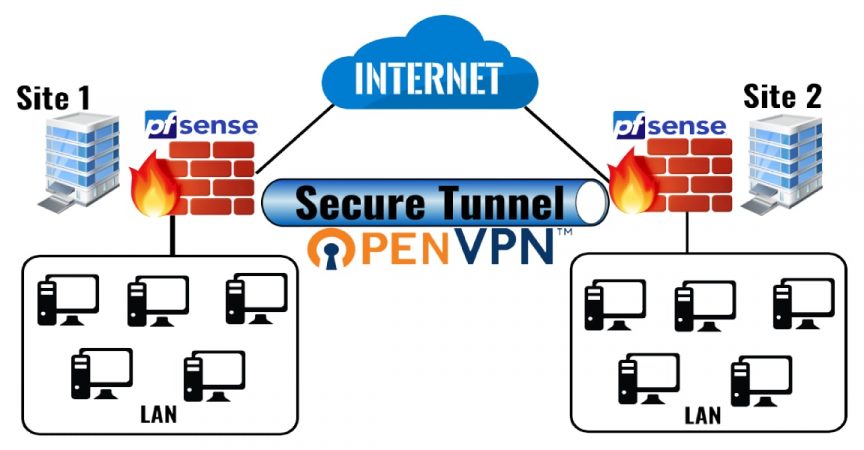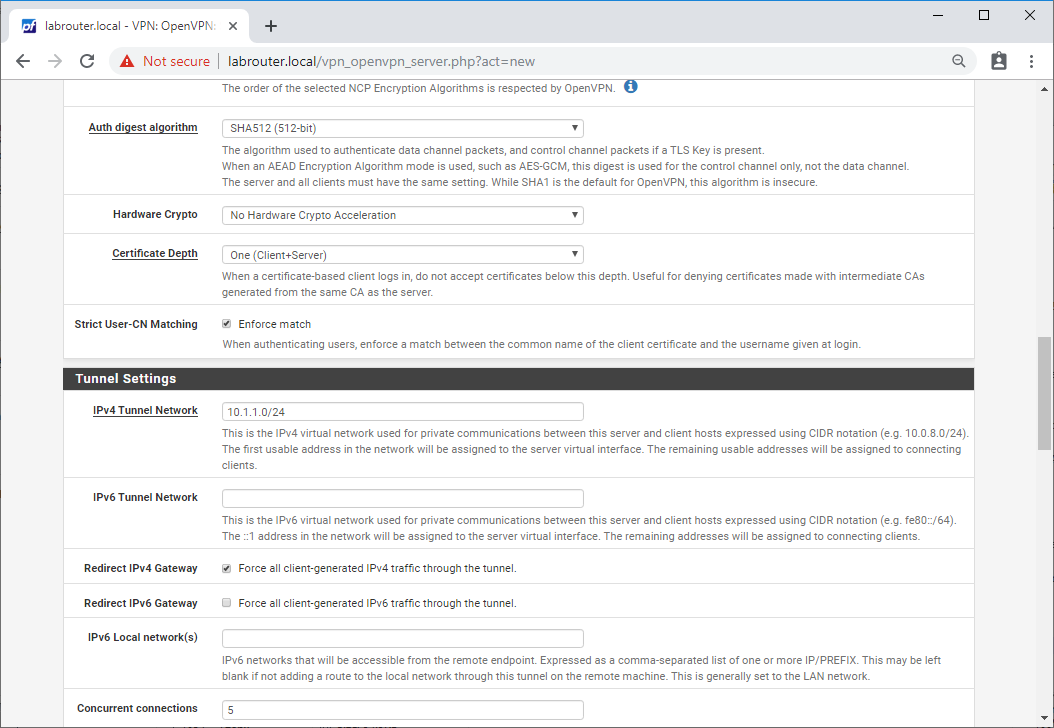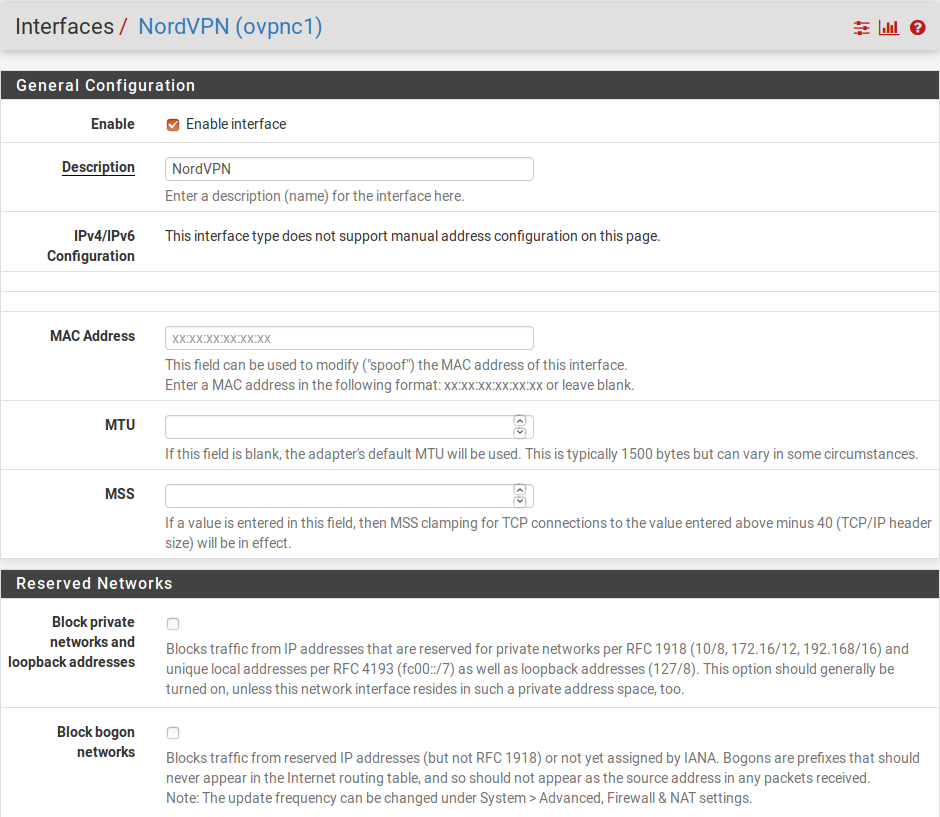

- #Pfsense openvpn setup how to
- #Pfsense openvpn setup install
- #Pfsense openvpn setup iso
- #Pfsense openvpn setup plus
- #Pfsense openvpn setup download
But when I tried to change the default gateway with one of the LAN devices I can receive a reply when I ping from the OpenVPN client. Right now our LAN devices are pointing to 192.168.0.1 which is the Main pfsense. I've also put the Ipv4 local networks that will be accessible from the remote endpoint in OpenVPN server setup which is the 192.168.0.0/24 LAN.
For the OpenVPN Clients as a secondary Firewall.īased on my Test, I successfully Connect the OpenVPN client to the Secondary Pfsense however I can't ping the LAN devices except for the OpenVPN Pfsense LAN interface which is 192.168.0.4. For the default gateway of the LAN Network as Main Firewall. #Pfsense openvpn setup download
Test the VPN simply downloading openvpn client and export configuration (or download a packaged version directly from VPN –> OpenVPN –> Client Export ) and connecting with it’s option under openvpn client connection option.I am currently doing a test for our OpenVPN setup through Pfsense, we have 2 Pfsense running on the network,
#Pfsense openvpn setup install
I suggest to install opnevpn-client-export package to speed-up vpn client delivery process
Share configuration data for Open VPN client. Issue new user in System -> User manager -> Users>. The simplest way to distribute client-to-lan vpn to users is: For this reason the only way to connect is using the pfSense ip which has a LAN ip. This because every server in LAN has default gw rule pointing to edge. …and add masquerading rule from every client connecting. Move to Firewall –> NAT –> OpenVPN then configure Outbound Mode Hybrid To enable OpenVPN clients to connect to LAN ip move to Firewall –> Rules –> OpenVPNīecause OpenVPN is not the default router it’s mandatory that every connected client must be masquerate by firewall ip. Install the WireGuard package via the package manager, and you can set up and manage WireGuard VPN tunnels directly from. PfSense is well-made system made with good security level for this reason you have to set some rules to enable users to connect with vpn and to the other systems in lan: A OpenVPN client version that uses 2.5.x (pfSense 2.6. optional: you could insert routes into custom options Create a PfSense VPN Certificate for the OpenVPN Server 3. Default pfSense setup (no fancy routing, no VLAN, no other packages except the pfSEnse 'openvpn-client-export' package. You can change most tunnel values to your liking my settings are. optional: flag Provide DNS server list to clients Go to VPN > OpenVPN > Server and click Add. use 10.0.0.0/24 (aka LAN) in IPv4 Local network. 
#Pfsense openvpn setup plus
This is a plus because login times, access limits, and other options are possible. The firewall can centrally manage usernames and passwords and this method also supports additional RADIUS-specific options.
#Pfsense openvpn setup how to
use CIDR logical lan for client in ipv4 tunnel network This document demonstrates how to setup OpenVPN with RADIUS user authentication provided by the FreeRADIUS package. the defaults are: protocol UDP, tun, WAN and port 1194. choose the right access mode: in this case (client to lan) User Auth is enough. The wizard will guide you through the process of creating a certificate authority, issuing a server certificate, and configuring the OpenVPN server settings. Note that you should insert more alternative names depending on NAT, DNS entry, etc and certificate type must be Server The simplest way to configure OpenVPN on pfSense is to use the built in VPN configuration wizard. create an internal certificate wi Internal CA as authority.  move to system –> cert manager –> certificate. Create an internal ca with local country and organization data. Note: the default credential are admin/pfsense… after first login you should change this password! Use a client (or a server with gui) to connect to the web ui. This could be the scenario after all configurations are done: a logical lan available (means not in conflict with other lan) for clientsĬonfigure wan and lan and wan using options in main menu:. Public IP to make this connection available over internet. Optional: At this moment you could make a template keeping in mind that due to FreeBSD support (incomplete) you’re not able to configure ip settings during VM deployment.
move to system –> cert manager –> certificate. Create an internal ca with local country and organization data. Note: the default credential are admin/pfsense… after first login you should change this password! Use a client (or a server with gui) to connect to the web ui. This could be the scenario after all configurations are done: a logical lan available (means not in conflict with other lan) for clientsĬonfigure wan and lan and wan using options in main menu:. Public IP to make this connection available over internet. Optional: At this moment you could make a template keeping in mind that due to FreeBSD support (incomplete) you’re not able to configure ip settings during VM deployment. #Pfsense openvpn setup iso
2 network device (leave not configured)Īttach ISO Image pfSense and start installation.create a user, a CA, a certificate, set the VPN server settings, including the encryption.

In this post I’ll show howto do it with pfSense. Configure pfsense firewall with a OpenVPN site to site server. In some situations it could happens to use a client vpn to access in some lan or network segment to manage or interacts with systems that are isolated from external access.








 0 kommentar(er)
0 kommentar(er)
